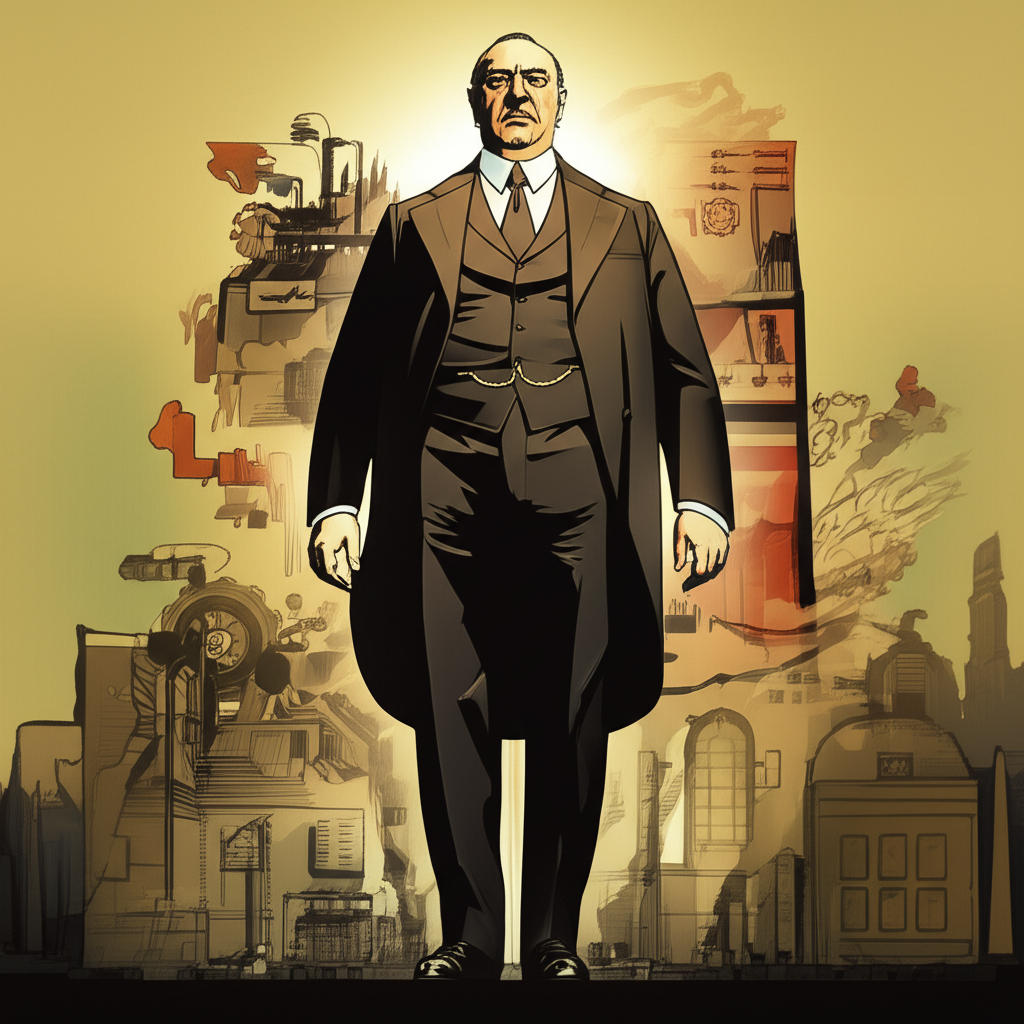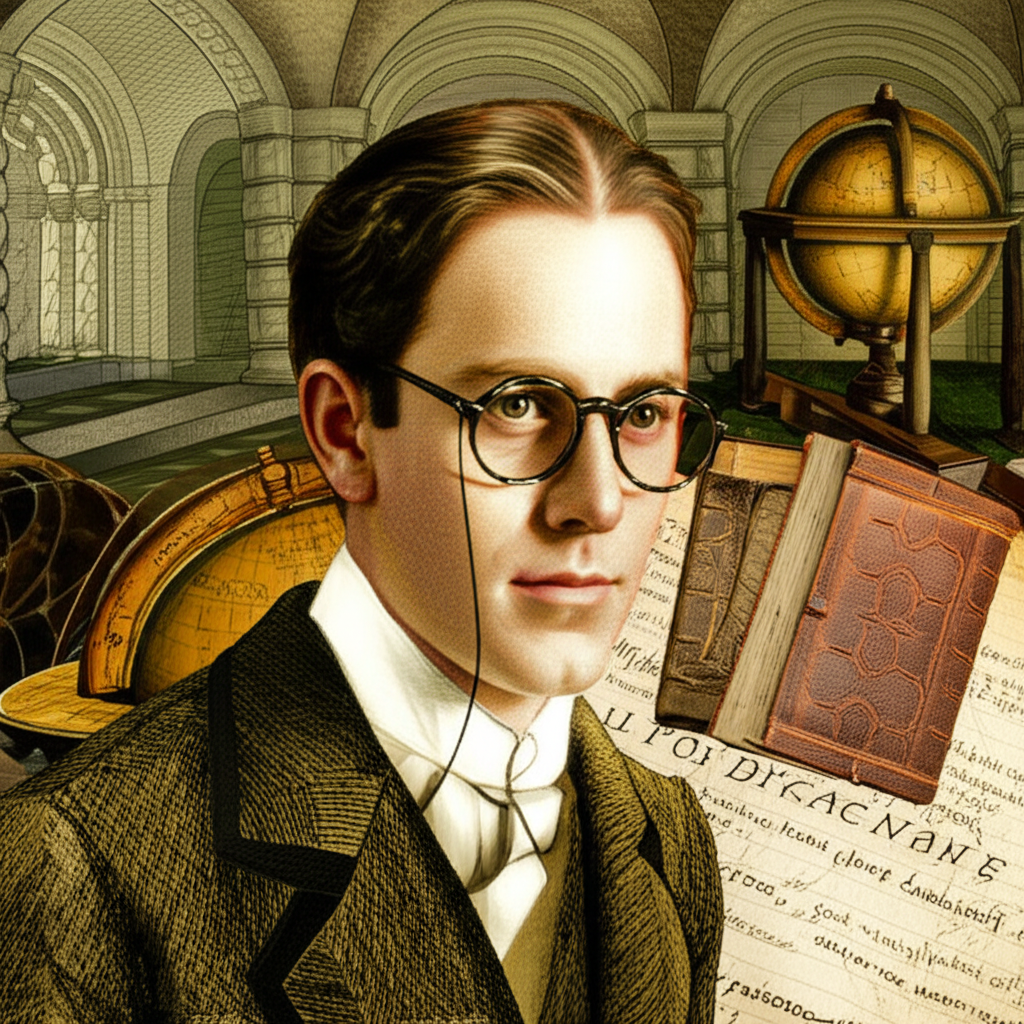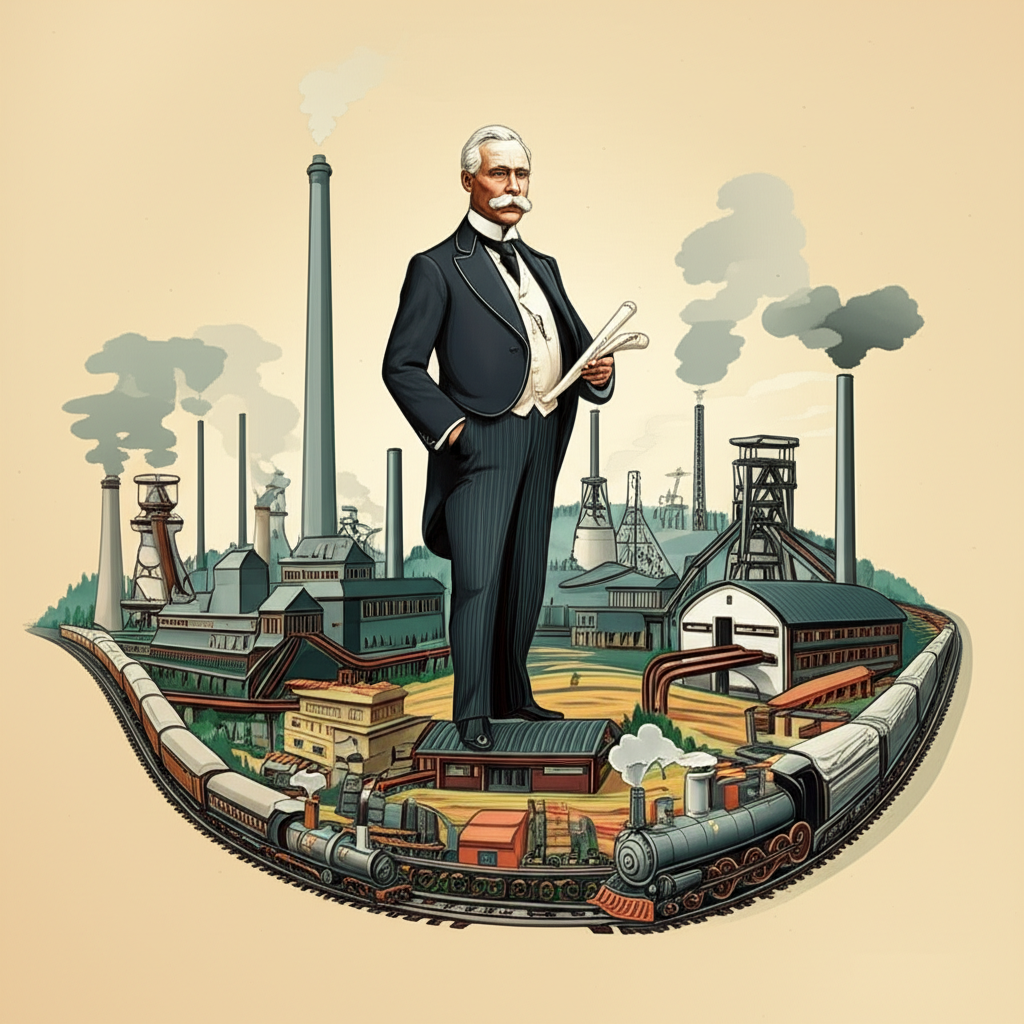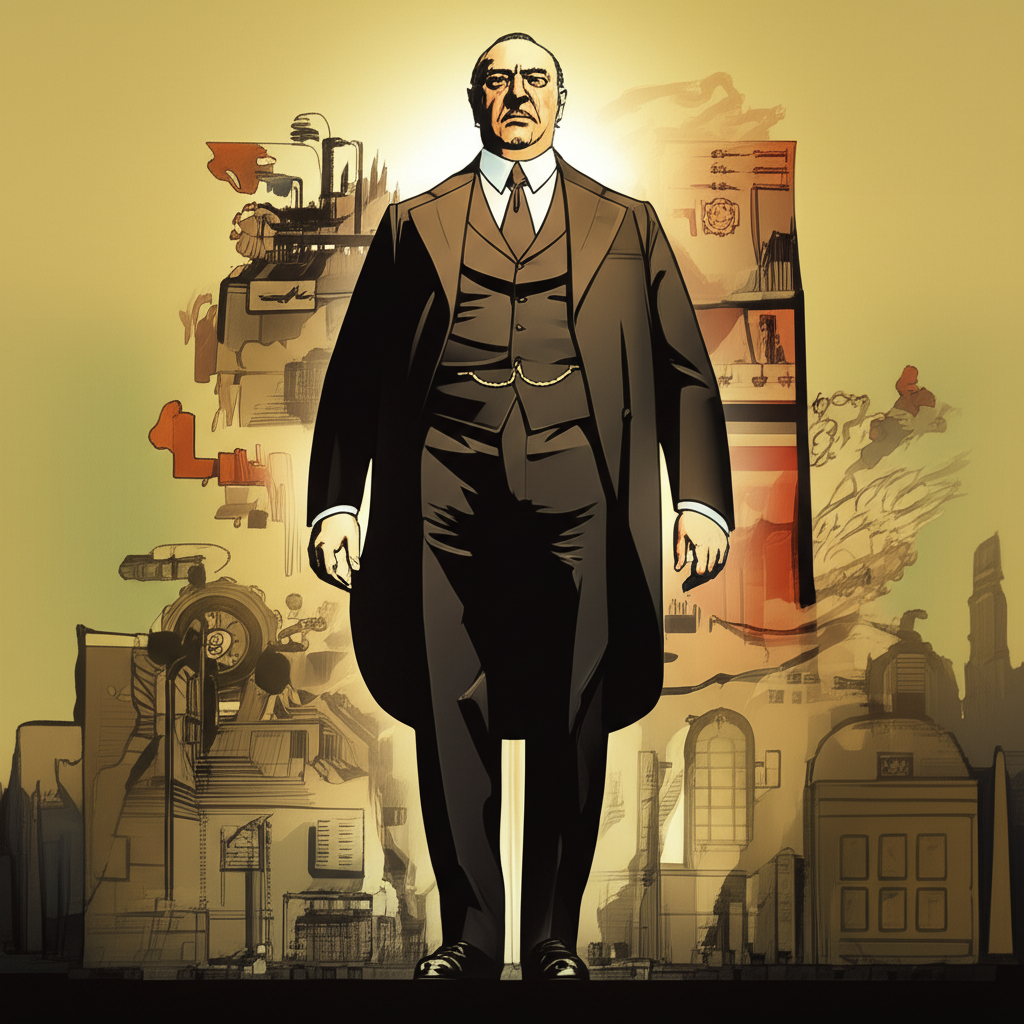Introduction: The Enduring Legacy of J.P. Morgan

John Pierpont Morgan remains one of the most consequential figures in American economic history—a name that evokes both admiration and controversy. More than a financier, Morgan functioned as a force of economic transformation during a pivotal era of industrial expansion. His influence extended far beyond the balance sheets of banks and corporations; he helped shape the foundation of modern American capitalism, steering industries toward consolidation, averting national financial collapse, and leaving behind a cultural legacy through art and philanthropy. While his name is often cited in discussions of Gilded Age power, the full scope of his life—marked by strategic brilliance, personal idiosyncrasies, and deep cultural investment—deserves closer examination. This article explores the pivotal moments, lesser-known facets, and lasting impact of a man whose decisions reverberated across decades.
Early Life and Formative Years: Shaping a Financial Titan

Born on April 17, 1837, in Hartford, Connecticut, John Pierpont Morgan was raised in a world already shaped by finance. His father, Junius Spencer Morgan, was a respected international banker whose firm, J.S. Morgan & Co., operated out of London and connected elite financial circles across the Atlantic. This privileged environment gave young Pierpont early exposure to transatlantic banking practices and global economic currents. His education reflected this cosmopolitan upbringing: after preparatory schooling in the U.S., he studied at the University of Göttingen in Germany, where he developed fluency in German and gained insight into European financial systems. His father’s strict expectations and emphasis on discipline instilled in him a sense of precision and authority that would define his later business style. These years of rigorous training and international immersion laid the intellectual and professional groundwork for a career that would redefine American industry.
The Architect of American Industry: Monumental Business Deals

J.P. Morgan’s greatest legacy lies in his ability to bring order to the chaotic landscape of 19th-century American industry. At a time when competition often led to destructive price wars and unstable markets, Morgan saw opportunity in consolidation. He didn’t just fund companies—he restructured them, merging rivals and eliminating inefficiencies to create dominant, vertically integrated enterprises. His most ambitious undertaking was the formation of **U.S. Steel Corporation** in 1901. By acquiring Andrew Carnegie’s steel empire and combining it with other major producers like Federal Steel and National Steel, Morgan engineered the world’s first billion-dollar corporation. This unprecedented move not only transformed the steel industry but signaled a new era of corporate scale and financial engineering. His influence extended across multiple sectors: in 1892, he facilitated the merger of Edison General Electric and Thomson-Houston to form **General Electric**, a cornerstone of the modern electrical industry. He reorganized major railroads to end ruinous competition, consolidated shipping lines through the **International Mercantile Marine Company**, and helped create **International Harvester**, a dominant force in agricultural machinery. Each of these ventures reflected Morgan’s belief that centralized control could bring stability, efficiency, and long-term profitability to American business.
Savior of the Nation: J.P. Morgan’s Role in Financial Crises

One of the most remarkable aspects of J.P. Morgan’s career was his role as an unofficial financial stabilizer during moments of national crisis. In an era before the Federal Reserve, the U.S. lacked a central institution to manage liquidity and restore confidence during economic panics. Morgan stepped into this void with decisive action. The most dramatic example occurred during the **Panic of 1907**, when a wave of bank runs and collapsing stock prices threatened to bring down the entire financial system. With markets in freefall, Morgan summoned the leading bankers of New York to his library on East 36th Street. There, he orchestrated a coordinated rescue effort, brokering agreements and pooling resources to provide emergency funding. He personally committed millions of his own money and pressured others to follow, ensuring the survival of key trusts and brokerage firms. His intervention effectively halted the panic and restored market confidence. A similar effort during the **Panic of 1893** saw Morgan help stabilize the U.S. gold reserve by arranging a government bond sale that replenished Treasury holdings. These actions cemented his reputation as a private central banker—someone whose personal authority and financial network could rival that of a nation’s treasury. A detailed analysis of his actions during the 1907 crisis is available on the Federal Reserve History website.
A Connoisseur’s Collection: Philanthropy and His Passion for Art
Beyond the world of high finance, J.P. Morgan was a passionate collector of art, rare books, and historical manuscripts. His collecting was not a mere hobby but a deeply driven pursuit of cultural preservation. Over decades, he amassed one of the most extensive private libraries in the world, including priceless medieval illuminated manuscripts, early printed books like Gutenberg Bibles, and original scores by composers such as Mozart and Beethoven. His art collection spanned ancient Near Eastern artifacts, Renaissance paintings, and European decorative arts, reflecting a broad and discerning taste. Unlike many of his contemporaries who kept such treasures hidden, Morgan believed in public access. Upon his death, much of his collection was transferred to public institutions. The crown jewel of this legacy is the Morgan Library & Museum in New York City, originally his private study and library, which opened to the public in 1924. He also served as president of the **Metropolitan Museum of Art** and donated thousands of artworks, helping to shape its world-class collections. His philanthropy extended beyond the arts—he supported hospitals, theological schools, and cultural institutions, viewing wealth as a responsibility to uplift society.
The Man Behind the Myth: Personal Traits and Eccentricities
J.P. Morgan was known for his commanding presence and uncompromising demeanor. Standing tall with a broad frame, he carried himself with an air of authority that intimidated even seasoned financiers. One of his most noticeable features was his nose, enlarged and discolored due to rhinophyma, a condition that often drew public attention and caricature. Yet it was his eyes—sharp, penetrating, and seemingly unblinking—that left the deepest impression. Colleagues and rivals alike spoke of his ability to dominate a room with silence, using prolonged eye contact to unsettle opponents during negotiations. He had little patience for indecision or pretense, valuing directness and competence above all. Loyalty was a cornerstone of his professional relationships; he surrounded himself with trusted associates and expected unwavering reliability in return. Stories of his decisiveness abound—of closing billion-dollar deals with a handshake, or halting a merger simply by shaking his head. His personality, though austere, was not without warmth in private circles, where he was known to enjoy music, storytelling, and the company of intellectuals.
J.P. Morgan’s Religious Convictions: A Glimpse into His Faith
While his financial achievements dominate historical accounts, Morgan’s personal faith played a significant role in shaping his worldview. A lifelong member of the Episcopal Church, he was deeply committed to St. George’s Episcopal Church in New York City, where he served as a vestryman for many years and provided substantial financial support. His religious beliefs were rooted in tradition and order, values that mirrored his approach to business. He viewed economic stability not just as a financial goal but as a moral imperative, aligning with the Protestant work ethic that emphasized stewardship, discipline, and responsibility. This sense of duty influenced his actions during financial crises—he saw his interventions not merely as profitable opportunities but as necessary acts to preserve the nation’s economic health. For Morgan, wealth was not an end in itself but a tool entrusted to him to maintain balance and progress in society.
Beyond Banking Hours: His Lesser-Known Hobbies and Interests
Away from Wall Street, Morgan sought refuge in pursuits that reflected his appreciation for beauty and craftsmanship. Yachting was one of his greatest passions. He owned a series of luxury yachts, each named *Corsair*, with the final vessel, *Corsair IV*, serving as a floating estate equipped with a library, office, and guest accommodations. These yachts were more than status symbols—they functioned as mobile boardrooms where Morgan conducted high-level meetings in privacy. The sea offered him a rare escape from the relentless pace of finance, allowing time for reflection and informal diplomacy. He was also an avid horticulturist, with a particular fascination for orchids. His estate at Cragston and his New York residence featured extensive greenhouses where rare species were cultivated under expert care. These interests reveal a man who, despite his formidable public image, valued refinement, nature, and moments of quiet contemplation.
The “Robber Baron” Debate: Controversies and Criticisms
Despite his contributions to economic stability and cultural advancement, J.P. Morgan’s legacy is not without controversy. During the Progressive Era, reformers and journalists labeled him a “robber baron”—a term used to describe industrialists who allegedly built empires through monopolistic practices, labor exploitation, and political influence. Critics argued that his consolidation efforts, while efficient, reduced competition and concentrated too much power in the hands of a few. The creation of massive trusts like U.S. Steel raised concerns about market dominance and consumer harm. In 1912, the **Pujo Committee** launched a congressional investigation into the so-called “money trust,” with Morgan’s banking network at its center. The hearings scrutinized how a small group of financiers could control vast segments of the economy, raising alarms about democratic accountability. While Morgan defended his actions as necessary for industrial progress, the debate over his methods continues today. Was he a visionary who brought stability to a turbulent economy, or a symbol of unchecked corporate power? The answer, as with many historical figures of his stature, lies somewhere in between—a reflection of the complex trade-offs inherent in rapid industrialization.
A Lasting Influence: J.P. Morgan’s Enduring Legacy
The impact of J.P. Morgan on American capitalism is both profound and multifaceted. He helped transition the U.S. economy from fragmented, competitive enterprises into a structured, corporate-driven model that fueled 20th-century growth. His methods of financial engineering, merger orchestration, and crisis management set precedents that influenced generations of bankers and industrialists. It’s important to distinguish, however, between the man and the institution that bears his name. **JPMorgan Chase**, today one of the world’s largest financial services firms, traces its roots to the banking houses Morgan established, including J.P. Morgan & Co. Yet the modern corporation operates within a highly regulated, publicly accountable framework—a far cry from the personal authority Morgan once wielded. His son, **J.P. Morgan Jr.** (often called Jack), inherited his father’s mantle and continued the family’s influence, particularly during World War I, where he played a key role in financing the Allied war effort and stabilizing post-war European markets. Through both direct action and institutional continuity, the Morgan name remained synonymous with financial leadership well into the modern era.
Conclusion: The Indelible Mark of J.P. Morgan
J.P. Morgan was a paradox—a titan of capitalism who saved the nation’s economy, a collector of beauty who commanded brutal boardroom power, and a man of immense wealth who gave generously to the public good. His life captures the contradictions of the Gilded Age: a period of extraordinary innovation and growth, but also of deep inequality and concentrated power. The facts of his career—his role in building industrial giants, stabilizing financial markets, and enriching cultural institutions—paint a portrait of a man who shaped the modern world in ways few others could. His story remains relevant, offering insights into the enduring tension between economic efficiency and democratic fairness, between individual power and collective responsibility. More than a financier, J.P. Morgan was a defining architect of modern America.
Frequently Asked Questions About J.P. Morgan
What made J.P. Morgan one of the most powerful figures in American history?
J.P. Morgan’s power stemmed from his unparalleled ability to consolidate fragmented industries, finance massive corporate mergers, and exert significant influence over the U.S. financial system. His personal wealth and network of powerful associates allowed him to orchestrate deals that created industrial giants like U.S. Steel and General Electric, effectively shaping the modern American economy.
What significant financial crises did J.P. Morgan help resolve?
His most famous intervention was during the **Panic of 1907**, where he personally organized a consortium of bankers to inject liquidity into the banking system, preventing a total collapse of the U.S. economy. He also played a crucial role in stabilizing the economy during the Panic of 1893.
What was J.P. Morgan’s connection to the art world and philanthropy?
J.P. Morgan was a prolific art collector and bibliophile, amassing an extraordinary collection of art, books, and manuscripts. He was a major benefactor to the Metropolitan Museum of Art and established the Morgan Library & Museum, which houses much of his personal collection, ensuring public access to these cultural treasures. He also made significant philanthropic contributions to various other institutions.
Was J.P. Morgan considered a “robber baron” by his contemporaries?
Yes, J.P. Morgan, along with other powerful industrialists of his time, was often labeled a “robber baron” by critics. This term reflected concerns about his monopolistic practices, immense concentration of wealth and power, and perceived ruthless business tactics that some argued stifled competition and exploited workers.
What was J.P. Morgan’s religious affiliation?
J.P. Morgan was a devout Episcopalian. He was a lifelong member and significant benefactor of St. George’s Episcopal Church in New York City, and his faith is believed to have influenced his sense of duty and responsibility in his business and philanthropic endeavors.
How did J.P. Morgan’s distinctive appearance affect his public image?
Morgan had a distinctive, enlarged nose due to rhinophyma, which was often depicted in caricatures. Despite this, his intense, piercing eyes and imposing presence were widely noted. He commanded respect and often intimidated those around him, contributing to his formidable public image as a man of immense power and authority.
What is the difference between J.P. Morgan (the person) and JPMorgan Chase (the company)?
J.P. Morgan was the individual financier and industrialist who lived from 1837 to 1913. JPMorgan Chase is a modern, global financial services institution that bears his name and traces its origins back to firms he founded and influenced. While the company carries his legacy, it is a vastly different entity operating in a modern, regulated financial landscape, distinct from the personal power wielded by the man himself.
Did J.P. Morgan have any lesser-known hobbies or personal interests?
Beyond his passion for art and collecting, Morgan was an avid yachtsman, owning several large and luxurious yachts that served as both retreats and informal business meeting places. He also had an interest in horticulture, particularly orchids, and maintained extensive greenhouses.
What was J.P. Morgan’s net worth at the time of his death?
At the time of his death in 1913, J.P. Morgan’s estate was valued at approximately $80 million, a staggering sum for the era. While this made him one of the wealthiest men in the world, it was often noted that his true power lay not just in his personal fortune, but in his control over vast corporate assets and his ability to command financial resources from others.
Who was J.P. Morgan Jr., and what was his legacy?
J.P. Morgan Jr., also known as Jack Morgan, was John Pierpont Morgan’s son and his successor in leading the family’s banking empire. He continued his father’s legacy, notably playing a crucial role in financing the Allied powers during World War I and helping to stabilize global financial markets in the post-war era. He ensured the enduring influence of the Morgan firm in international finance.

留言